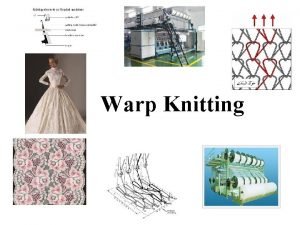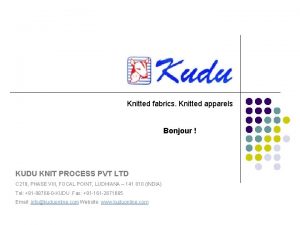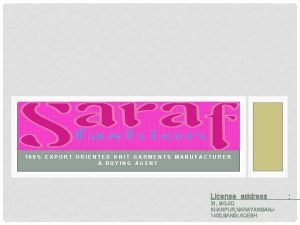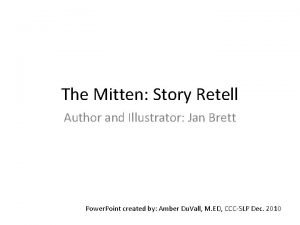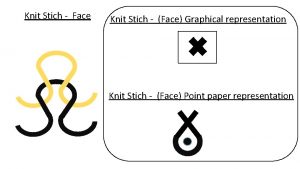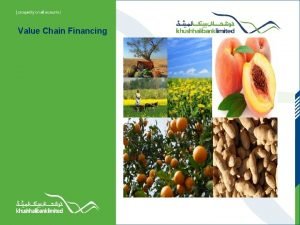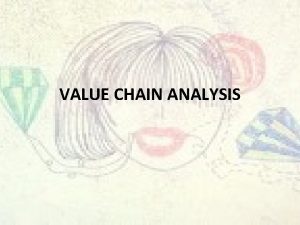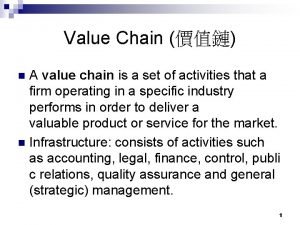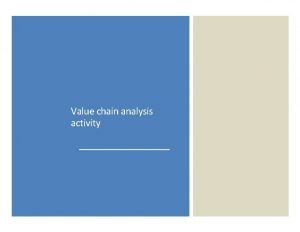Value Chain Knit Almost complete value chain Some







- Slides: 7

Value Chain: Knit Almost complete value chain Some of the factories fully vertically integrated : Spinning to finished garment. Competitive wage, Easily trainable workforce, Expanding supply side capacity, government supporting policy helped to gain competitive advantage. Core strength is backward linkage. 95% knit fabric produced locally Net export is higher than woven. In FY 2006 -07, Export share of knit and woven were 37. 39% and 38. 25% respectively. Cumulative average growth of knitwear is 27%. Advantages of Bangladeshi Knitwear: Self sufficient – 95% fabric and accessories collected Locally. Integrated Good capacity exists Unbeatable in price Cheap labor with high stitching capability Good reputation of Bangladeshi Knit apparels all over the world.

Value Chain : Woven Only a few weaving factories that offer quality product. So, majority of fabrics has to be imported – higher purchasing cost, dependency on external supplier, pricing disadvantages, No GSP facilities for imported fabrics. Can meet only 25% of fabric demand. More than 220 modern weaving mill need to be set up, each with an annual capacity of 10 million yards. Annual Consumption of fabric: 3 billion yards. Consumption Increasing @ 20% per year

Distribution Structure Direct Contact: Contact Directly to the apparel producers regarding price, samples, delivery schedule etc – more dependency on manufactures regarding quality. Production Agencies/Buying house: Take care of product development, purchase of fabrics and accessories, follow up production, conducting inspection, scheduling shipment date etc. Satellite office: Has own QC dept. and


Advantages of RMG in Bangladesh: Low wages : The success of the Bangladeshi apparel industry is mainly attributed to its low production costs, in particular its cheap labour. The average monthly wage for a garment factory worker is about $43, whereas in China it's more than a $100. "The closest to the Bangladeshi wage is in Cambodia, where garment workers get around $61 per month. "That's almost 50% more than the Bangladeshi wages. So, the labour advantage for Bangladesh is quite huge. "

Average Hourly Wages (including Fringe Benefits) in RMG Industry COUNTRY HOURLY WAGE(US$) SINGAPORE 3. 56 MEXICO 2. 40 MALAYSIA 1. 20 THAILAND 1. 04 PHILLIPINES 0. 78 INDIA 0. 56 PAKISTAN 0. 49 INDONESIA 0. 43 VIETNAM 0. 40 SRILANKA 0. 39 CHINA 0. 40 BANGLADESH 0. 23

Western brands such as H&M, Wall Mart, Gap and Next buy their clothes from Bangladesh

